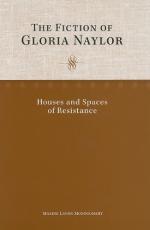|
This section contains 6,085 words (approx. 21 pages at 300 words per page) |

|
SOURCE: Toombs, Charles P. “The Confluence of Food and Identity in Gloria Naylor's Linden Hills: ‘What We Eat Is Who We Is.’” CLA Journal 37, no. 1 (September 1993): 1–18.
In the following essay, Toombs argues that the foods that the characters eat in Linden Hills shows their connection, or lack thereof, with their African-American cultural heritage.
Yet the people went on living and reproducing in spite of the bad food. Most of the children had straight bones, strong teeth. But it couldn't go on like that. Even the strongest heritage would one day run out.
—Ann Petry, The Street
Gloria Naylor's second novel, Linden Hills (1985), presents a scathing examination of the precarious struggle for African-American identity in the nineteenth and twentieth centuries. The novel, concerned with an exploration of the fictional middle-class black community of Linden Hills, devotes a significant amount of its attention to detailing the ways in which some...
|
This section contains 6,085 words (approx. 21 pages at 300 words per page) |

|


